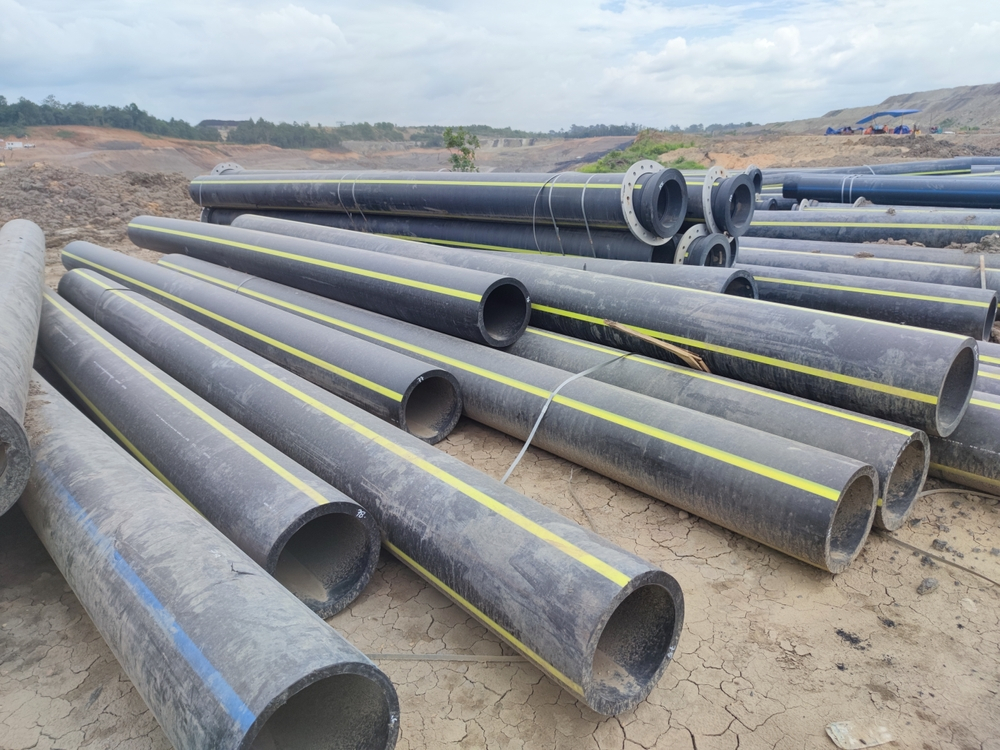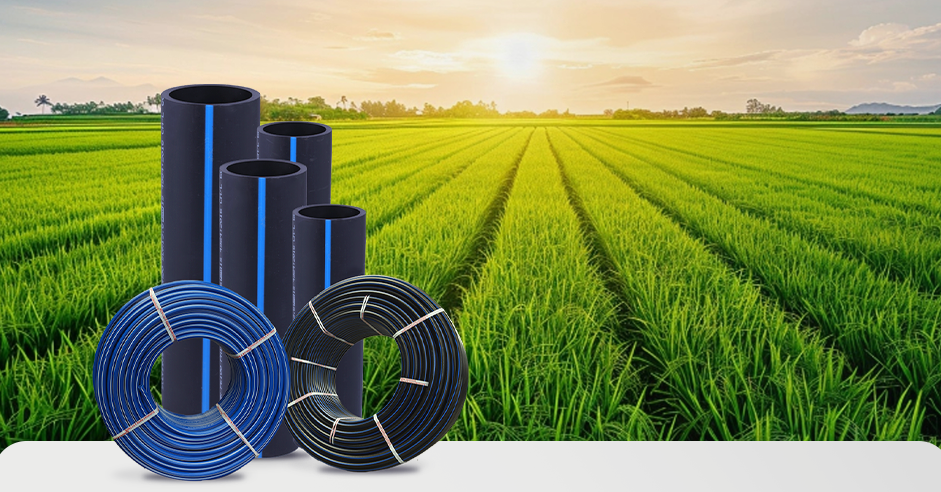Advantages of Choosing custom hdpe pipe manufacturing Midland TX for Tailored Solutions
Check Out the Manufacturing Refine Behind High-Quality HDPE Pipeline and Its Applications
The production procedure of high-quality HDPE pipes is detailed and methodical. It begins with the option of resources that enhance performance. Following this, ethylene undertakes polymerization to form material, which is after that shaped with extrusion. Quality assurance is paramount, guaranteeing that the final item meets rigid standards. Nevertheless, the trip of HDPE pipelines doesn't end with manufacturing. Their applications throughout numerous sectors reveal a more comprehensive significance worth checking out.
Understanding HDPE: Features and Advantages

High-density polyethylene (HDPE) is a versatile thermoplastic known for its durability and resistance to different environmental factors. This product exhibits outstanding tensile stamina, making it ideal for demanding applications. Its low-density structure adds to a light-weight item, assisting in simplicity of handling and installation. HDPE additionally showcases remarkable resistance to chemicals, which reduces deterioration when exposed to extreme substances.
The product's low moisture absorption additionally boosts its durability, making it excellent for use in pipelines and tank. Furthermore, HDPE is resistant to ultraviolet (UV) radiation, guaranteeing that items keep their honesty even when subjected to sunlight. In addition, its adaptability enables for the production of intricate shapes without endangering strength. The green nature of HDPE, typically stemmed from recycled products, includes to its appeal, advertising sustainable practices in production. Overall, these residential properties and benefits make HDPE a favored option for various industrial and consumer applications.
Resources Selection for HDPE Production
The choice of basic materials for HDPE production is necessary to confirm the final product meets the desired specs and quality criteria. High-density polyethylene (HDPE) is primarily created from polymerized ethylene, originated from nonrenewable fuel sources such as gas or unrefined oil. The top quality of these feedstocks considerably influences the mechanical and thermal residential properties of the last HDPE.
Additives additionally play a significant function in improving HDPE's efficiency, consisting of antioxidants, UV stabilizers, and colorants, which boost toughness and resistance to ecological aspects. The option procedure need to think about not just the chemical composition of the raw products however additionally their handling characteristics to assure reliable production.
Furthermore, the sourcing of basic materials should focus on sustainability and conformity with environmental laws, as responsible practices are vital in today's market. Ultimately, mindful basic material choice lays the foundation for creating top notch HDPE pipelines suitable for diverse applications.
The Extrusion Process: Forming HDPE Pipeline
The extrusion process plays a vital role in shaping HDPE pipelines, starting with thorough product preparation techniques that ensure perfect circulation and consistency. Just as essential is the style of the die, which straight affects the final dimensions and surface high quality of the pipe. With each other, these aspects add considerably to the efficiency and high quality of HDPE pipeline production.
Material Preparation Methods
Efficient manufacturing of HDPE pipes begins with careful product prep work techniques, especially the extrusion process. During this phase, high-density polyethylene resin is first dried to remove moisture, ensuring ideal flow qualities. The material is then fed right into the extruder, where it undertakes home heating and melting, changing into a viscous state. This heating process is very carefully controlled to keep the product's integrity and efficiency. The molten HDPE is required with a die, shaping it right into a continual pipeline type. Appropriate temperature monitoring during extrusion is necessary, as it directly affects the material's homes and the end product top quality. As soon as formed, the HDPE pipeline is cooled and cut to specified sizes, ready for subsequent handling and applications.
Die Layout Relevance
Accuracy in die layout plays an essential function in the extrusion procedure of HDPE pipelines. The die serves as the final shaping device, straight influencing the pipeline's measurements, wall thickness, and surface area finish. A well-designed die assurances uniform material flow, minimizing defects such as irregularities and weak points. The geometry of the die have to be maximized to suit the particular residential properties of HDPE, including its viscosity and thermal actions throughout extrusion. Additionally, the cooling rate of the material as it goes through the die can markedly affect the pipe's architectural honesty. Investing in innovative die modern technology is crucial for makers aiming to create top notch HDPE pipelines that fulfill industry requirements and customer assumptions.
Top Quality Control Steps in HDPE Production
Although various variables affect the high quality of HDPE pipe production, efficient quality assurance actions are vital to ensure consistency and dependability in the end product. Key quality assurance methods include strenuous material evaluation, confirming that the raw polyethylene fulfills well established standards for pureness and density. During the extrusion process, parameters such as temperature, pressure, and cooling time are very closely monitored Recommended Reading to preserve dimensional precision and architectural integrity
In addition, post-production screening is important; manufacturers frequently conduct hydrostatic examinations to assess the pipeline's strength and resistance to pressure. Visual assessments for surface issues even more enhance high quality assurance. Qualification from pertinent requirements companies, like ASTM or ISO, offers an extra layer of integrity. By executing these extensive top quality control steps, makers can reduce defects, boost performance, and make sure that the HDPE pipelines meet the specific requirements of different applications, ultimately leading to consumer fulfillment and trust fund in the item.
Applications of HDPE Pipe Across Industries
HDPE pipes are utilized throughout various fields because of their toughness and versatility. In water circulation systems, they ensure reliable distribution, while in wastewater monitoring, they supply reliable solutions for waste transport. In addition, agricultural irrigation networks take advantage of HDPE's resistance to corrosion and versatility, making it a perfect choice for contemporary farming practices.

Water Circulation Systems
A substantial number of markets depend on high-density polyethylene (HDPE) pipes for efficient water circulation systems. Known for their toughness and resistance to deterioration, HDPE pipes are commonly used in community supply of water networks, farming irrigation, and commercial applications. Their light-weight nature assists in very easy handling and installment, decreasing labor expenses and time. Additionally, HDPE pipes can accommodate numerous pressure degrees, making them appropriate for both low and high-pressure systems. hdpe pipe suppliers Midland TX. The adaptability of the material permits for seamless assimilation into existing infrastructure, reducing the requirement for considerable excavation. HDPE's resistance to chemical seeping guarantees that the water provided remains secure and tidy, making it an ideal option for preserving the high quality of safe and clean water throughout different sectors.
Wastewater Management Solutions
Reliable water circulation systems additionally pave the method for ingenious wastewater management remedies, where high-density polyethylene (HDPE) pipelines play a significant role. Prominent for their toughness and resistance to rust, HDPE pipelines are suitable for transferring wastewater in different settings. Their versatility permits easy installation in complex atmospheres, decreasing the demand for substantial excavation. Additionally, HDPE's smooth interior surface lowers friction, boosting circulation prices and performance. These pipes are additionally resistant to chemical leaching, making sure that pollutants do not jeopardize the surrounding setting. Industries, communities, and treatment centers significantly count on HDPE pipelines for their reliability and long life, making them a recommended selection for modern wastewater management systems. This adaptability underscores the critical value of HDPE pipelines throughout numerous applications.
Agricultural Watering Networks
Agricultural watering networks profit significantly from making use of high-density polyethylene (HDPE) pipelines, which provide efficient and reputable water distribution to plants. HDPE pipelines are lightweight, making them very easy to move and install, while their adaptability permits for different arrangements in diverse surfaces. These pipes show exceptional resistance to deterioration, chemicals, check my source and UV radiation, ensuring durability in harsh agricultural environments. Furthermore, their smooth indoor surface lessens friction loss, enhancing water circulation and minimizing energy prices connected with pumping. The long life of HDPE pipelines, commonly going beyond half a century, contributes to lower maintenance and replacement expenditures. Subsequently, farmers significantly rely upon HDPE pipelines to boost watering performance and promote sustainable agricultural methods, eventually causing improved plant returns and resource preservation.
Future Trends in HDPE Pipeline Innovation
As the demand for lasting and effective framework expands, innovations in HDPE pipe innovation are positioned to transform different industries. Arising patterns include the integration of smart modern technologies, such as sensing units and IoT abilities, which pipe leak fix help with real-time surveillance of pipe conditions, decreasing maintenance costs and protecting against leaks. Additionally, the development of sophisticated production strategies, such as 3D printing, is enabling the production of facility, tailored pipe designs that cater to particular task demands.
The focus on recycling and round economic climate methods is driving the innovation of HDPE pipelines made from recycled materials, enhancing sustainability. Boosted jointing techniques, such as electro-fusion and mechanical fittings, are also improving setup performance and reliability. Lastly, the growing focus on ecological guidelines is pushing suppliers to adopt greener production procedures, making sure that HDPE pipelines not only satisfy sector standards yet likewise promote an even more sustainable future for infrastructure development.
Regularly Asked Questions
How Does HDPE Compare to Various Other Plastic Materials?
HDPE outshines numerous various other plastic materials pertaining to toughness, chemical resistance, and flexibility. Its reduced density and high tensile stamina make it suitable for different applications, frequently going beyond options in both efficiency and durability.
What Are the Ecological Influences of HDPE Manufacturing?
The ecological influences of HDPE manufacturing consist of greenhouse gas discharges, power usage, and potential pollution from manufacturing processes. In addition, inappropriate disposal can bring about soil and water contamination, increasing concerns regarding long-term environmental impacts.
Can HDPE Piping Be Reused?
Yes, HDPE pipelines can be recycled. Many centers approve utilized HDPE for processing, changing it into brand-new items. This recycling adds to sustainability initiatives, decreasing plastic waste while saving resources and energy in the manufacturing cycle.
What Is the Life Expectancy of HDPE Piping?

How Do Temperature Level Variants Affect HDPE Pipeline Efficiency?
Temperature variants greatly affect HDPE pipeline performance, influencing adaptability and stamina. Heats can lead to softening, while low temperatures might trigger brittleness, eventually influencing the pipe's toughness and suitability for different applications in diverse environments.